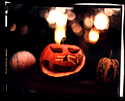RogerHyam
Subscriber
I came across a cheap copy of "Polymer Photogravure" by Clay Harmon (Focal Press 2019) in a charity shop and it has got me thinking about having a go. Other than the press and the consumables I have all the bits and pieces to hand.
Clay Harmon's book is based on making an inkjet acetate positive and using an aquatint screen to make the plate but I've noticed that since the book was published most people (including Clay) seem to be using a direct to plate method, that is inkjet printing onto the polymer plate rather than making a separate positive. I have an Epson R3000 that should be capable of doing this.
When I look for the approach to take to create and print the positive file I'm coming up against a wall. There are plenty of videos on YouTube of people doing this process and a few blog posts but they all jump over the most tricky bit of creating the positive. I need to know how to include the aquatint element in the image. I'm presuming this is because many of the people who do this technique earn a living from workshops. But I'm not a workshop type person and even if I was to do a workshop I'd want to work through the whole process before I took it. I see workshops as for the intangible/ineffable part of the process not the mechanics.
I may be totally missing something but can anyone point me in the direction of a guide to producing digital positives to be printed direct to photopolymer plates? I'm looking for the principles involved as much as the "slide this slider in photoshop" type instruction.
(Of course this is creating a digital positive so may not belong in this forum! I can't put it in the alternate techniques because it contains digital. Maybe it is homeless...)
Clay Harmon's book is based on making an inkjet acetate positive and using an aquatint screen to make the plate but I've noticed that since the book was published most people (including Clay) seem to be using a direct to plate method, that is inkjet printing onto the polymer plate rather than making a separate positive. I have an Epson R3000 that should be capable of doing this.
When I look for the approach to take to create and print the positive file I'm coming up against a wall. There are plenty of videos on YouTube of people doing this process and a few blog posts but they all jump over the most tricky bit of creating the positive. I need to know how to include the aquatint element in the image. I'm presuming this is because many of the people who do this technique earn a living from workshops. But I'm not a workshop type person and even if I was to do a workshop I'd want to work through the whole process before I took it. I see workshops as for the intangible/ineffable part of the process not the mechanics.
I may be totally missing something but can anyone point me in the direction of a guide to producing digital positives to be printed direct to photopolymer plates? I'm looking for the principles involved as much as the "slide this slider in photoshop" type instruction.
(Of course this is creating a digital positive so may not belong in this forum! I can't put it in the alternate techniques because it contains digital. Maybe it is homeless...)





